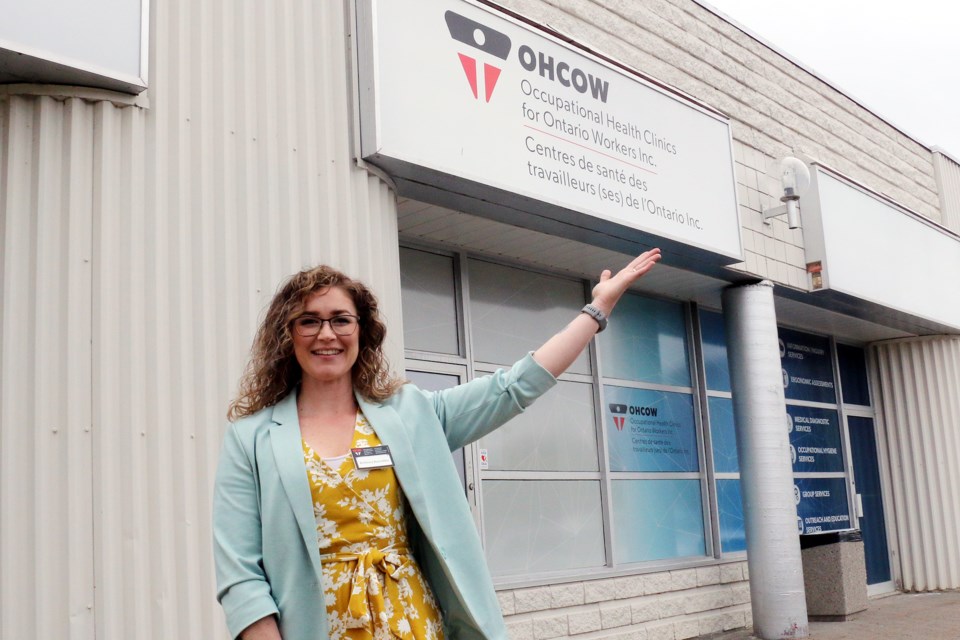OHCOW, the Occupational Health Clinics for Ontario Workers, celebrated its 35th anniversary on June 7 with an open house at the Sudbury office.
And while the group won a significant workers' victory with the recognition of McIntyre Powder being associated with Parkinson’s disease for Northern Ontario miners two years ago, the OHCOW group continues working on a host of other workplace associated illnesses and injuries where workers feel their health and well being has been impacted. The McIntyre Powder campaign continues.
Brittney Ramakko, the executive director of the Northern Region at the Sudbury office, said one of the key aims of OHCOW is to help workers establish that their illness or injury was work-related.
The question is how does this set them apart from WSIB, Ontario's Workplace Safety and Insurance Board, which is set up to compensate workers who claim their injury or illness came from the workplace?
"So a lot of our clients would have applied for WSIB and had been denied," said Ramakko.
"So they can come to us. We have teams with an occupational health nurse, occupational hygienist, ergonomists and physicians. They'll review and provide an independent evaluation. So you can come in and get your file looked at and a second opinion, basically," she said.
She said the role of OHCOW is not to refute WSIB but to closely examine any medical or work-related detail that might have been overlooked.
Ramakko said part of the work done by OHCOW is to gather information from workers on some of the bleak working conditions that might contribute to occupational illness or injury.
The OHCOW website outlines exposure to workplace hazards can include exposure to vapours and gasses, mould, allergens, dangerous chemicals, diesel exhaust particulate, silica, asbestos, noise and even smoke from wildfires.
She said while the community might be aware of the work being done across the North by the Sudbury office, there are in fact seven OHCOW clinics located across Ontario: Thunder Bay, Ottawa, Hamilton, Toronto, Sarnia, Windsor and Sudbury.
She said the Sudbury office recently moved from a downtown venue to the new spaces at 432 Westmount Avenue, off of BarryDowne, in the city's New Sudbury neighbourhood.
Ramakko said the downtown location was excellent in many ways but parking was limited and accessibility was also an issue for many clients. She said the new venue on Westmount has much to offer.
Sudbury MPP Jamie West, who dropped by for the anniversary celebration, told the gathering that OHCOW is one of the best kept secrets in Sudbury because of the importance of health and safety knowledge for the workplace. West recalled his previous employment at Vale where he was a smelter worker health and safety representative. West said there was a wealth of health and safety resources for the workers at Vale, but often it was useful to contact OHCOW to get additional information.
In his role as MPP, West presented a congratulatory scroll to OHCOW Sudbury executive director Ramakko.
West was also accompanied by a person regarded as a legend in terms of promoting worker health and safety in Ontario, Leo Gerard.
As a former United Steelworkers international director and Companion of the Order of Canada, Gerard said he was pleased to be on hand to celebrate the anniversary.
Gerard recalled that it was USW Local 1005 in Hamilton that set out to get the first OHCOW clinic running on its own. That first clinic was created in 1989 by the Ontario Federation of Labour (OFL) and was funded through the Ontario Ministry of Labour, now known as the ministry of Labour, Immigration, Training and Skills Development (MLITSD).
Gerard jokingly told the crowd that the fight to get funding for OHCOW wasn’t pretty but it was worth it.
— Sudbury.com




